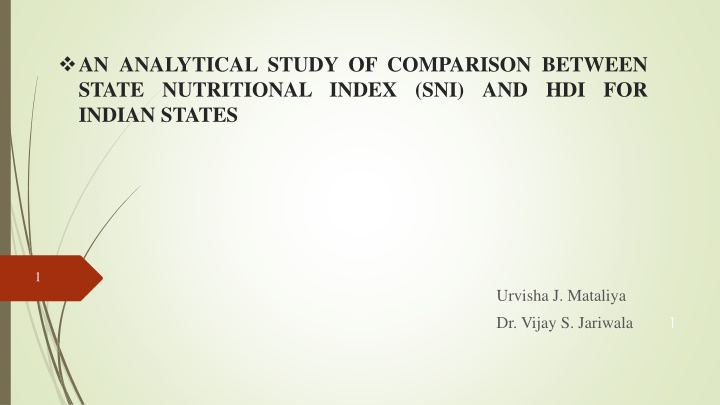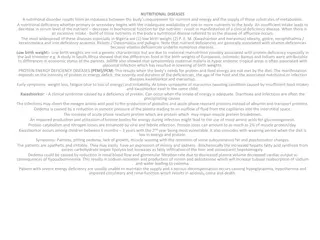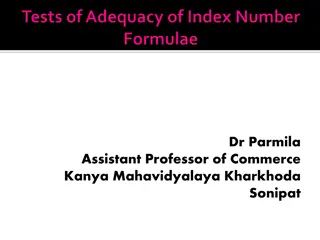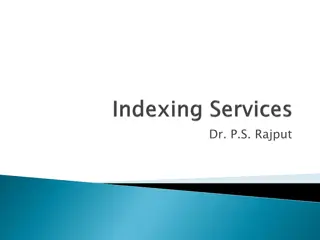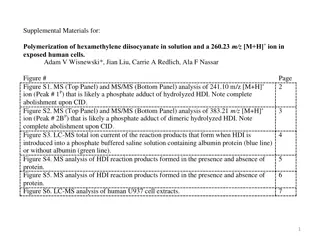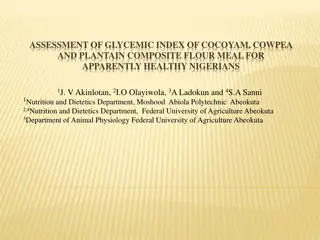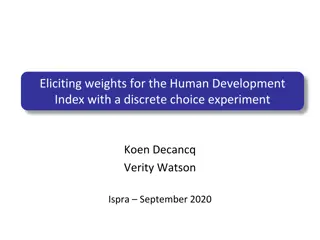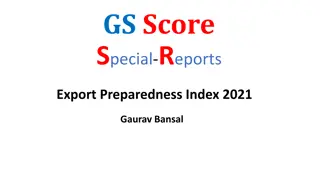Comparative Study Between State Nutritional Index (SNI) and HDI for Indian States
The study compares the State Nutritional Index (SNI) and Human Development Index (HDI) for Indian states, exploring the nutritional status of children under five years. Various indicators and rankings shed light on the prevalence of malnutrition across different regions.
Download Presentation

Please find below an Image/Link to download the presentation.
The content on the website is provided AS IS for your information and personal use only. It may not be sold, licensed, or shared on other websites without obtaining consent from the author.If you encounter any issues during the download, it is possible that the publisher has removed the file from their server.
You are allowed to download the files provided on this website for personal or commercial use, subject to the condition that they are used lawfully. All files are the property of their respective owners.
The content on the website is provided AS IS for your information and personal use only. It may not be sold, licensed, or shared on other websites without obtaining consent from the author.
E N D
Presentation Transcript
AN ANALYTICAL STUDY OF COMPARISON BETWEEN STATE NUTRITIONAL INDEX (SNI) AND HDI FOR INDIAN STATES 1 Urvisha J. Mataliya Dr. Vijay S. Jariwala 1
Introduction 2 What is malnutrition? Types of malnutrition Economic growth vs Nutritional status of India GHI -2023 Construction of State Nutritional Index (SNI)
Literature review 3 (Rosenbloom et al., 2008) Researchers have developed a Global Nutritional Index (GNI) modelled on the Human Development Index (HDI), which is based on three indicators of nutritional status- deficit, excess, and food security. The results of this study showed that Japan has achieved first rank (0.989) and the United States (0.806) has obtained the last rank in developed countries. Estonia (0.943) ranked first in transition, while Tajikistan (0.629) obtained the last rank in transition countries. The Republic of Korea has secured first rank in the case of low-mortality developing countries. Algeria (0.876) achieved first rank in high-mortality developing countries, while Sierra Leone obtained the last rank in the high-mortality developing countries. (Kanjilal et al., 2010) This study indicated that across all major states, the lowest prevalence of stunting among children was found in Kerala, whereas more than half of the children below five years old were found stunted in Uttar Pradesh (57%), followed by Bihar (56%), Gujarat (52%), and Madhya Pradesh (50%).
Naaz & Akram, 2017) The study explored the major achievements and shortcomings of progress made on key indicators related to the nutritional status of children and adults in the last decade by making a comparative analysis of the NFHS-3 and NFHS- 4 factsheets. The results showed that in the case of stunted, Bihar was the worst- performing state, while Kerala was the best-performing state. In terms of wasted, Manipur state was the best-performing state, while Jharkhand was the worst- performing state. In the case of severely wasted children, results indicated that Jharkhand and Manipur were the worst and best-performing states, respectively. In the case of underweight, Jharkhand was the worst-performing state, while Mizoram was the best-performing state. (Soheylizad et al., 2016) They have studied the correlation between malnutrition status of children under five years and Human Development Index (HDI) Worldwide. A significant negative correlation was found between the prevalence of stunting and wasting with HDI. A positive correlation was observed between overweight and HDI. (Rajaram et al., 2003)The study assessed the nutritional status of children below five years. The results showed that the relative prevalence of underweight and wasting were high in Kerala, but the prevalence of stunting was medium. In Goa, relative prevalence of wasting and underweight were very high and prevalence of stunting was high as compared to Kerala. 4
Objectives 5 To inquire and compare the nutritional status of children under five years across the States of India by using NFHS-4 and NFHS-5 data To prepare the State Nutritional Index and compare its rank with Human Development Index rank
Methodology 6 To compare the nutritional status of children under five years across the states of India, a State Nutritional Index (SNI) is developed based on the five indicators of malnutrition: stunted, wasted, severely wasted, underweight, and overweight. Calculations are made for 27 states of India. Data for the SNI have been considered from the National Family Health Survey 4 (NFHS-4) (2015-16) and NFHS-5 (2019-21) for 27 states of India. The SNI rank of NFHS-5 has been compared with the HDI rank of 2020. Because the NFHS-5 survey was completed in 2019-21, it is logical to compare it with the HDI rank of 2020. Which makes the comparison more reliable.
For getting normalized value used following formula 7 For negative indicator = (Maxi-Xi) / (Maxi- Mini) . (1) When, Maxi = Maximum value of i indicator Xi = Actual value of i indicator Mini = Minimum value of i indicator For the construction of SNI we go for weightage mean Example (Andhra Pradesh) =Sum (stunted, wasted, severely wasted, underweight, overweight) *1/5 (2) = Sum (0.63+0.60+0.65+0.40+0.91) *1/5 = (3.19) *1/5 = 0.64
Results 8 Table-1 Comparison between the SNI rank of NFHS-4 and NFHS-5 Malnutritional Status Best Worst Source Authors own calculation NFHS-4 NFHS-5 Manipur (SNI-0.86) Jharkhand (SNI 0.2) Manipur (SNI 0.95) Gujarat (SNI- 0.24)
Changes in SNI rank from NFHS-4 (2015-16) to NFHS-5 (2019-21) 9
Table 2 Prevalence of malnutrition in NFHS-5 (2019-21) 10 Malnutrition type Stunted Wasted Severely Wasted Underweight Overweight Source Authors own calculations Best Sikkim Mizoram Manipur Mizoram Madhya Pradesh Worst Meghalaya Maharashtra Maharashtra Bihar Mizoram
Table -3 Bottom Five states of India according to HDI and SNI rank for NFHS-5 (2019-21) 11 Table -4 Top Five states of India according to HDI and SNI rank for NFHS-5 (2019-21) Sr. No State Nutritional Human Development Index Sr. No State Nutritional Human Development Index Index Index 1 Manipur Kerala 1 Jharkhand Bihar 2 Mizoram Himachal Pradesh, Sikkim 2 Madhya Pradesh Uttar Pradesh, Madhya 3 Himachal Pradesh Haryana, Maharashtra, Pradesh, Jharkhand Tamin Nadu, Punjab 3 Gujarat, Assam, Chhattisgarhi, 4 Nagaland Manipur, Mizoram Karnataka Bihar Odisha West Bengal 5 Kerala Karnataka, Nagaland, 4 Uttarakhand 5 Source - Authors own calculations Chhattisgarh Andhra Pradesh, Tripura Source - Authors own calculations
Differences observed between HDI rank and SNI rank in the year 2020 in 27 Indian states 12
Table 5 Categorization of Indian states based on State Nutritional Index value and Human Development Index value using criteria of Human Development Index for 2020 13 Classification Very High Category HDI NIL SNI Haryana, Manipur, Punjab (> 0.800) High Category Himachal Pradesh, Kerala, Sikkim Kerala, Mizoram, Tamil Nadu, (0.700 to 0.799) Medium Category Uttarakhand Andhra Pradesh, Arunachal Pradesh, Note- All the states except three states (0.550 to 0.699) (Himachal Pradesh, Kerala, Sikkim) are fall Himachal Pradesh, Madhya Pradesh, into the medium category Meghalaya, Odisha, Rajasthan, Sikkim Low Category NIL Assam, Bihar, Chhattisgarh, Gujarat, (<0.550) Jharkhand, Karnataka, Maharashtra, Nagaland, Telangana, Tripura, West Bengal Source Authors own calculations
Conclusion 14 The results show that one state is performing best in some indicator, but the performance in the other indicators need to be improve If some states perform best in HDI, it doesn t mean that their nutritional status is also good In economics, HDI is considered an indicator of economic development which also includes human development. Results indicate that HDI does not emphasised on nutritional status. So, when policymakers think about human development, they should also consider nutritional index like SNI with HDI simultaneously.
15 Thank you
